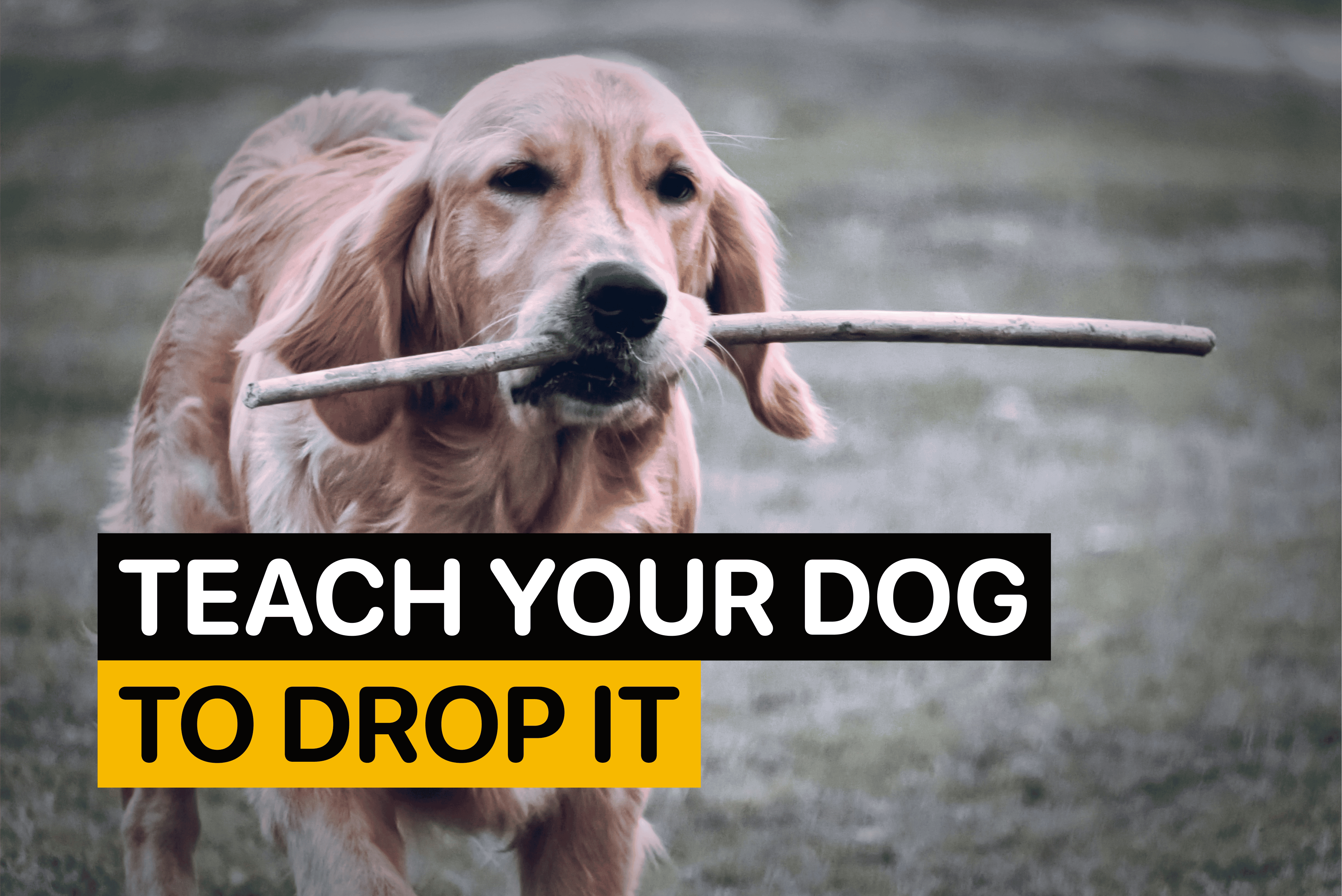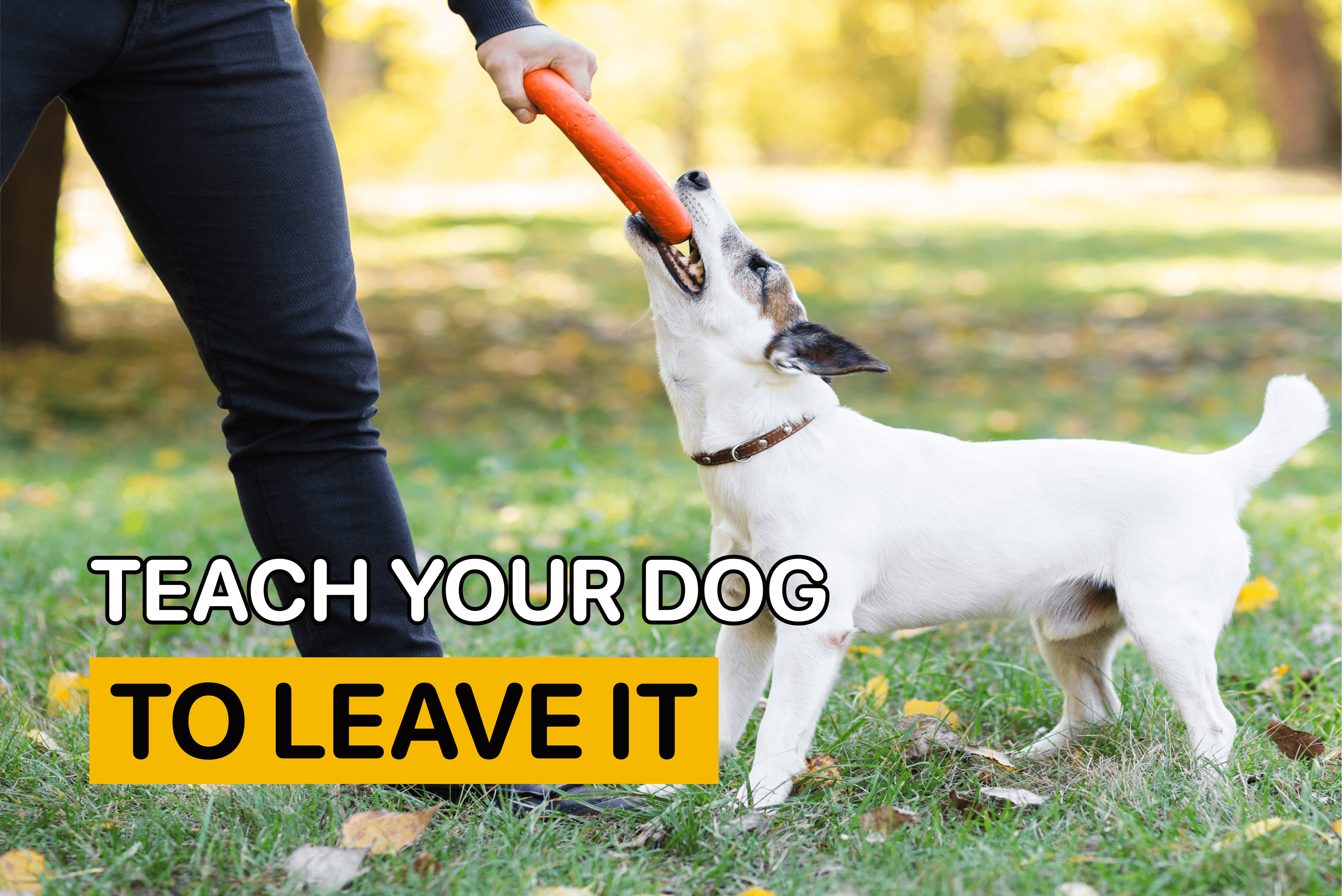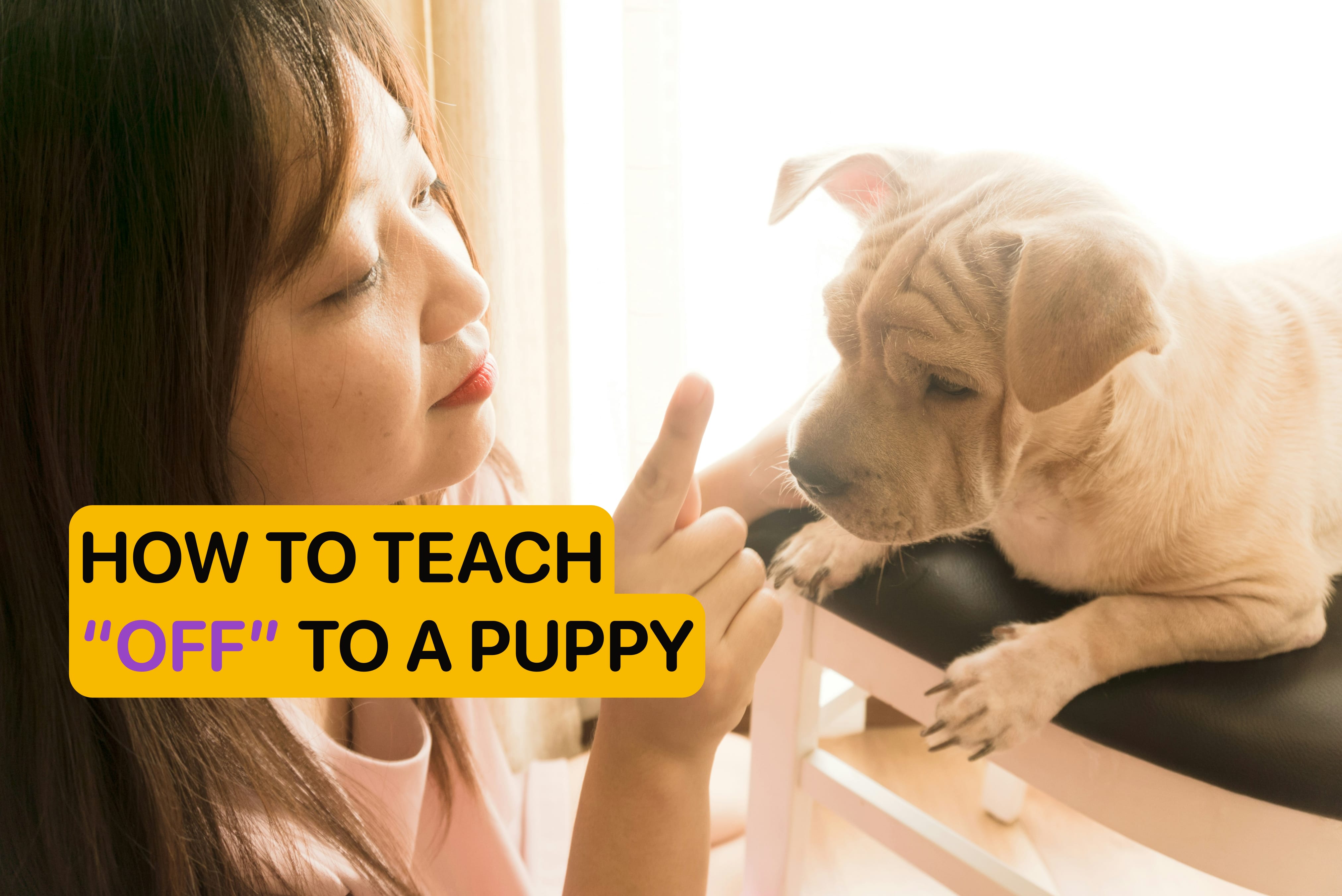How to teach a dog to put toys away?

By
Tetiana Zhudyk Updated on |Reviewed by Frederica Caneiro
Some owners find it frustrating to deal with the mess their dog leaves after playing with toys. What if we told you you don’t have to tidy it up yourself? You can teach your dog to pick up toys and help you!
Training your dog to collect dog toys and put them in the toy box is a win-win scenario for all parties involved. It makes you less anxious about daily tidying routines and provides a dose of mental stimulation for your dog. Not to mention, you can turn the cleaning process into a fun bonding activity.
Are you eager to learn more about teaching your dog to pick up toys? Keep reading for expert advice on training the trick.
What Equipment Do You Need?
If you want to train a dog to put toys away quickly and efficiently, you should dedicate time to thoroughly preparing for your future training sessions. You aim to teach your dog to pick up toys following your command and bring them to the box individually.
Here's some equipment you need:
-
Dog toys: You probably have plenty of toys at home. During the training sessions, you will teach your dog to collect them. And if your dog has a favorite toy, it's better to use that one to begin. You can also use a dehydrated snack or something your dog is more likely to pick up. If you use a snack, the treats used to reinforce commands should be highly valuable.
-
Treats: You will use treats as rewards to reinforce following the command.
-
Toy Box: The basket will be designated for your dog to put the collected toys.
How to Teach a Dog to Put Toys Away?
Teaching your puppy to drop a toy in a toy box involves several steps. Ensure the dog masters one step before you move to the next one. Stay patient and allow your dog to take their time to adjust.
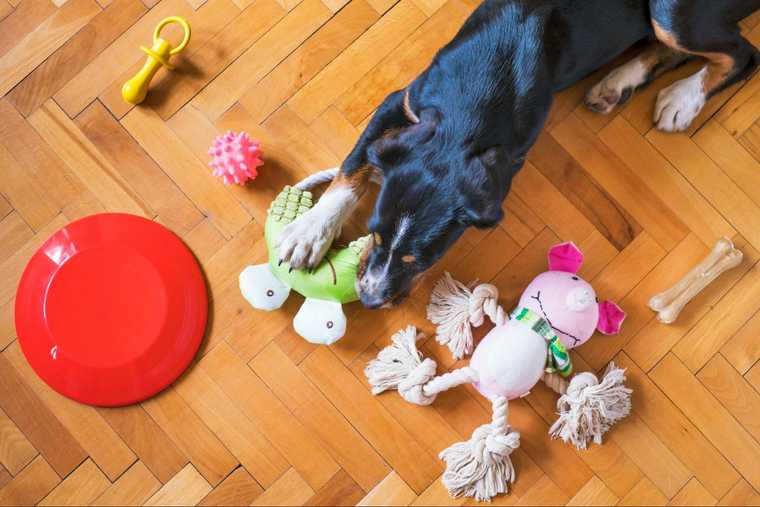
Here's how to teach a dog to clean up toys:
Step 1: Teach your dog to retrieve.
Your dog needs to know how to pick up a toy on your command. Knowing how to play a fetch game doesn’t come naturally to some dogs. If your dog struggles with it, follow our detailed instructions on teaching a dog to fetch. Once your dog masters the skill, you can proceed to the next stage.
Step 2: Teach your dog to drop the toy.
Now it’s time to show your dog how to drop an item in the toy box. Place it under your dog’s face, hand the toy to your dog, and give the “Drop it” command – praise and reward following the cue.
Pro tip: If your dog is unfamiliar with the drop cue, hold the treat in front of their nose while they hold the toy. Here’s how:
-
Drop it cue: Teach the dog to drop the toy
-
Drop it in the toy box: When the dog is already familiar with the "drop it" cue, put the box under their face. The dog will drop the toy to get the treat. Praise and introduce the verbal cue while gradually eliminating the lure.
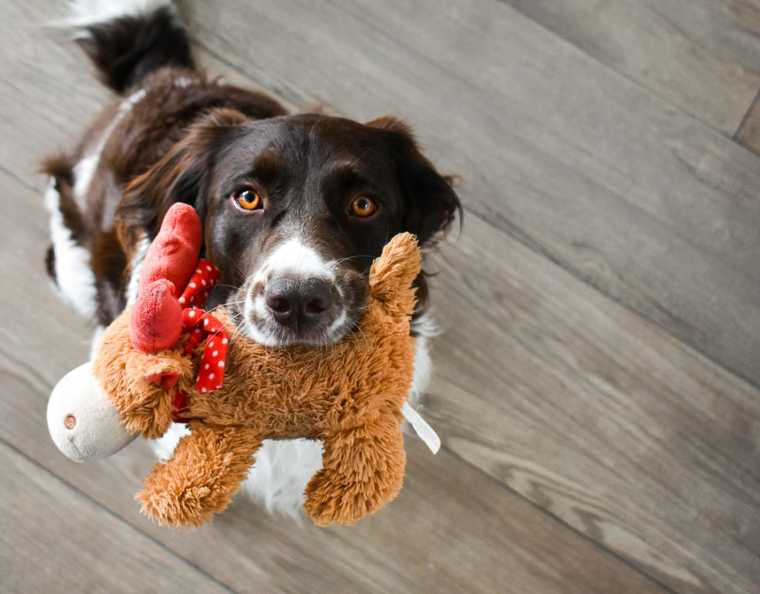
Step 3: Practice the verbal cue.
Keep handing the dog toys with the box positioned under their mouth. Give the cue drop so that toys fall straight into the basket. After some time, add a specific cue like “Toy box!” to teach your dog to put the toys away.
Step 4: Increase the distance.
When your dog consistently follows the cue “Toy box!” you can move the basket further. Encourage your dog to grab a toy placed not far from the box. Once the toy is in the dog’s mouth, give the command “Toy box!” to ask the dog to put the toy away. When the toy is dropped in the box, praise the dog excessively.
Step 5: Take the trick to the next level.
Now, you can start putting toy far away from the box and ask your dog to tidy up. Later, you can delay the praise and offer it only after the dog puts several toys in the basket.
Wrap Up
Teaching your dog to clean up their toys isn’t impossible. The trick is fun and relatively easy to train. Ensure your dog is good at the “fetch it” game before you start. Gradually increase the complexity of the command by teaching your dog to pick up and drop the items in the box, even if they are far from it. Stay patient and practice regularly to get the best results!
Read more:
